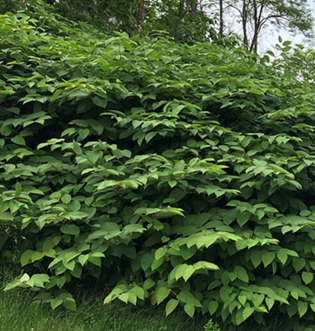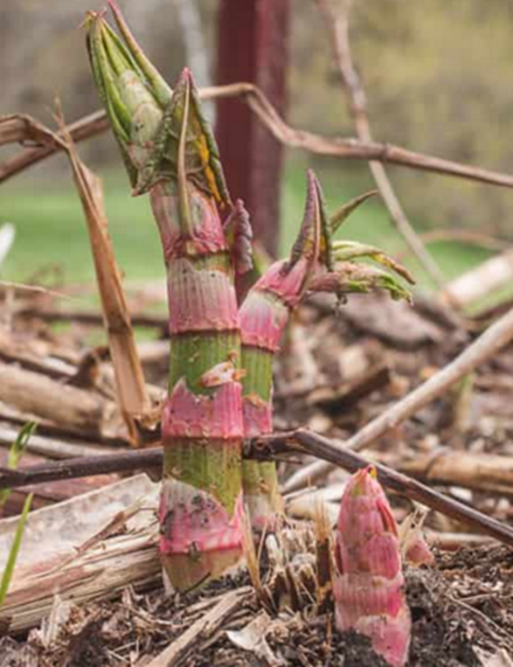
Japanese Knotweed
Japanese knotweed, a shrublike perennial in the Buckwheat family, can grow to over 10 feet in a season. First introduced as an ornamental, it has also been used for erosion control and for landscape screening.
Spreading aggressively, it forms dense thickets, displacing native vegetation and disrupting natural ecosystems. Especially damaging in riparian areas, it withstands even severe floods, rapidly colonizing scoured shores. Once established, populations are extremely persistent due to their extensive root system.
Control methods include repeated cutting to weaken rhizomes, with careful disposal of cuttings (dry thoroughly or bag and trash) to prevent regrowth. Grubbing can be effective for small infestations or sensitive sites where herbicides aren’t suitable.
Fun Fact: Knotweed is related to rhubarb and is edible. Harvest young shoots in spring; add to sauces, mash or roast with potatoes, puree into soups, substitute for rhubarb. Peel mature shoots before eating.

Nutrition: vitamins A & C, manganese, phosphorus, zinc, and potassium
Medicinal uses: antioxidant, anti-inflammatory, antimicrobial, anti-inflammatory and anticancer effects (National Library of Medicine)
